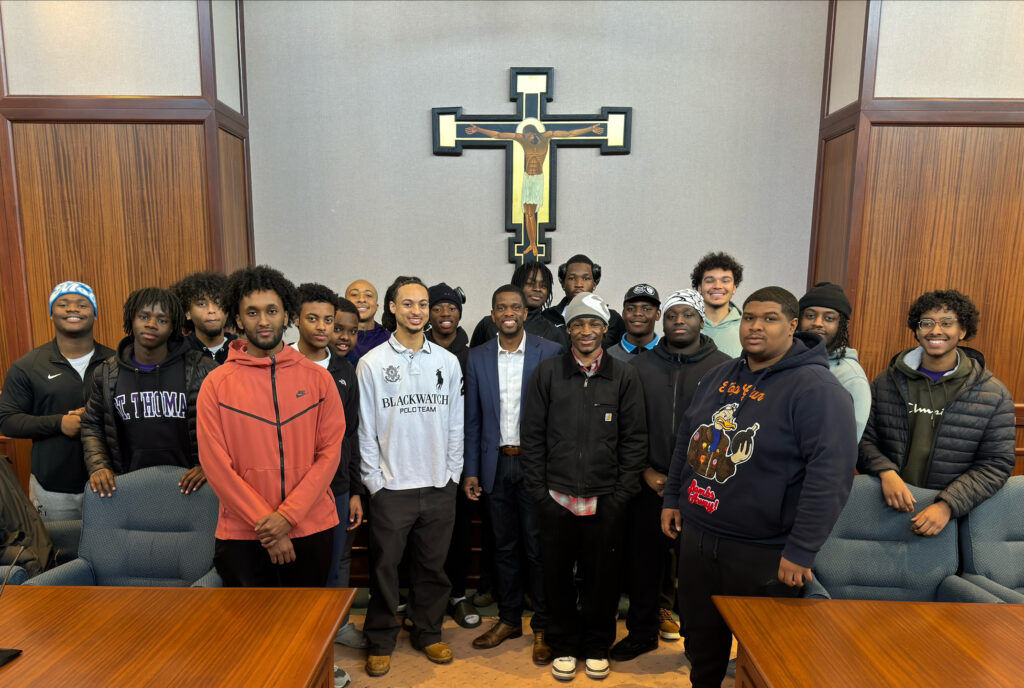Celebrate St. Patrick’s Day and honor St. Thomas’ Irish roots by learning about the Irish Gaelic language. Tom Jeffers, adjunct Gaelic professor, and Clar Johnston, the current Irish Language Fulbright Scholar on campus, will host an introductory meeting into Gaelic from noon-1 p.m. Thursday, March 19, in O’Shaughnessy Educational Center, Room 306. They will discuss what Gaelic sounds like and what courses and study abroad opportunities are available.
Students who study Gaelic at St. Thomas have a unique opportunity to study abroad for their third semester of the language, through the National University of Ireland, Galway, in Carraroe, a community just outside of Galway.
“The immersion experience in Ireland is truly a mutual beneficial experience for the students and the local community,” Jeffers said. “The students are surrounded by the Gaelic language and can refine their language skills in incredible ways. The locals gladly welcome students from all over the world into their isolated community to study their endangered native language.”
Bridget Gaughan, who studied there during summer 2014, said her host and hostess made her feel like family, and that helped with learning the language, and culture, such as cuisine, history and customs.
“It was so satisfying to have people talking to me in the language that they speak on a daily basis and have actual conversations in Irish,” Gaughan said.
Fulbright and the Ireland-United States Commission for Education Exchange offer scholarships to undergraduate students studying in Ireland for two to six weeks. The Gaeltacht Summer Award is granted to two UST students per summer term and covers full tuition for 6 credits of Intermediate Irish Language through the NUI Galway summer Gaelic Language program.
St. Thomas is one of 13 universities nationwide that offers Irish Gaelic language courses. The Gaelic language program was started by Tom Redshaw, professor emeritus of English and editor emeritus of the New Hibernia Review, in 1997.






